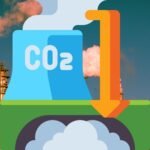Climate change mitigation refers to concerted efforts to reduce or prevent the long-term alteration of the Earth’s climate system. It involves strategies and actions that aim to curb the emission of greenhouse gases (GHGs) into the atmosphere, as well as methods to remove and store these gases, thereby minimizing the impacts of global warming. In this comprehensive article, we explore the concept of climate change mitigation, delve into key mitigation strategies and technologies, discuss the far-reaching consequences of unchecked climate change, and highlight the imperative for global cooperation in addressing this critical challenge.
Understanding Climate Change Mitigation
Climate change mitigation is driven by the recognition that human activities, particularly the burning of fossil fuels, deforestation, and industrial processes, have significantly increased the concentration of greenhouse gases (GHGs), including carbon dioxide (CO₂), methane (CH₄), and nitrous oxide (N₂O), in the Earth’s atmosphere. These gases trap heat, leading to a rise in global temperatures, which, in turn, causes widespread and potentially catastrophic changes in weather patterns, sea levels, ecosystems, and human societies.
Mitigation strategies aim to mitigate or reduce these emissions, either by preventing them from entering the atmosphere in the first place or by removing and securely storing GHGs already present. Successful mitigation efforts can slow the rate of global warming and limit the extent of its impacts, helping to create a more sustainable and resilient future for our planet.
Key Mitigation Strategies and Technologies
Climate change mitigation employs various strategies and technologies, each targeting different sources of GHG emissions and operating at various scales. Some of the most effective approaches include.
Transition to Renewable Energy Sources
A fundamental mitigation strategy involves transitioning from fossil fuels to renewable energy sources such as solar, wind, hydro, and geothermal. These renewable energy technologies generate electricity without emitting CO₂ and other pollutants, thereby significantly reducing emissions from the energy sector.
Energy Efficiency and Conservation
Improving energy efficiency in buildings, transportation, and industrial processes is a critical mitigation measure. Energy-efficient appliances, transportation systems, and industrial practices can significantly reduce energy consumption and GHG emissions.
Reforestation and Afforestation
Reforestation entails planting trees in areas that were once forested but have been cleared, while afforestation involves planting trees in areas that were not previously forested. These practices help absorb CO₂ from the atmosphere and promote biodiversity, contributing to GHG removal and ecosystem health.
Carbon Capture and Storage
Carbon capture and storage technologies capture CO₂ emissions from industrial processes and power plants, transport the gas to secure storage sites, and store it underground. This prevents the gas from entering the atmosphere and exacerbating global warming.
Sustainable Agriculture
Implementing sustainable agricultural practices, such as reduced tillage, organic farming, and precision agriculture, can reduce emissions of CH₄ and N₂O, potent GHGs released from soil and livestock. Sustainable agriculture promotes food security while minimizing its environmental footprint.
Shift to Low-Carbon Transportation
Transitioning to low-carbon transportation modes, such as electric vehicles (EVs), public transportation, and active transportation (e.g., cycling and walking), can significantly reduce emissions from the transportation sector, curbing CO₂ emissions and improving air quality in urban areas.
Circular Economy and Waste Reduction
Adopting a circular economy model that emphasizes reducing, reusing, and recycling materials can minimize emissions from landfills and industrial processes, which are significant GHG emissions. This approach promotes resource efficiency and reduces waste.
Consequences of Unchecked Climate Change
The consequences of unchecked climate change are wide-ranging and severe, impacting ecosystems, economies, public health, and global security.
Extreme Weather Events
Unchecked climate change increases the frequency and intensity of extreme weather events, including hurricanes, droughts, heat waves, and heavy rainfall. These events disrupt communities, damage infrastructure, and threaten lives, resulting in significant economic and social costs.
Rising Sea Levels
Global warming causes seawater to expand thermally and glaciers and polar ice caps to melt, leading to rising sea levels. This poses a significant threat to coastal communities, infrastructure, and ecosystems, potentially displacing millions and causing extensive economic losses.
Biodiversity Loss
Changes in temperature and precipitation patterns disrupt ecosystems and threaten biodiversity. Species unable to adapt or migrate may face extinction, affecting entire ecosystems and human food security, as biodiversity plays a crucial role in maintaining ecosystem services and resilience.
Water Scarcity
Changing climate patterns can lead to water scarcity in many regions, affecting agriculture, drinking water supplies, and industrial processes. Competition for limited water resources can exacerbate conflicts and threaten food security and human well-being.
Economic Disruption
Climate-related impacts, such as extreme weather events and sea-level rise, can disrupt economies. These effects can result in property damage, reduced agricultural yields, increased healthcare costs, and disruptions to global supply chains. Economic instability can result from both direct and indirect climate-related effects.
Global Migration and Conflict
Climate change-induced disruptions to food and water resources can lead to migration and exacerbate conflicts over scarce resources. This can result in global instability and security risks, affecting regional and international peace.
The Imperative for Global Cooperation
Mitigating climate change is a global imperative that transcends borders and political ideologies. International cooperation is essential to effectively addressing this critical challenge. The Paris Agreement, adopted in 2015, represents a landmark effort by nearly all nations to limit global warming to well below 2 degrees Celsius above pre-industrial levels and to pursue efforts to limit it to 1.5 degrees Celsius.
To achieve these targets, countries have committed to reducing their GHG emissions, transitioning to renewable energy sources, enhancing energy efficiency, and investing in climate-resilient infrastructure. The collective effort of governments, businesses, civil society, and individuals is essential to achieving these goals and ensuring a sustainable future for all.
Conclusion
Climate change mitigation is an urgent global priority that demands immediate action. Mitigation strategies, including the transition to renewable energy, energy efficiency, reforestation, and sustainable agriculture, offer a path to a more sustainable and resilient future. The consequences of unchecked climate change are severe, affecting ecosystems, economies, and human well-being. Global cooperation and a collective commitment to reducing GHG emissions are paramount to addressing this critical challenge effectively. The Paris Agreement provides a framework for international collaboration, but individual and local actions are equally essential. By embracing mitigation strategies and working together, we can limit global warming, protect vulnerable communities, and ensure a more sustainable and secure world for future generations.








